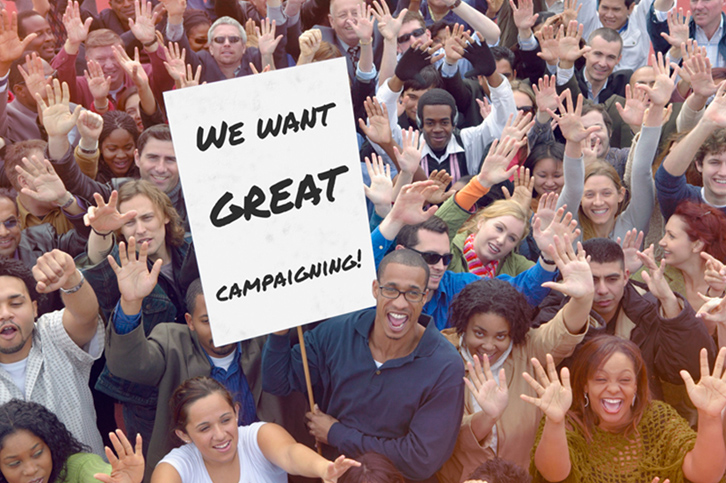The best tips and tricks are usually a result of things that went wrong. Campaigning is no exception and sometimes all that stands between you and great campaigns are the mistakes you didn’t make. Here are some of my favorite mistakes in campaigning.
1. No Concrete Goal
“Let’s do something edgy and funny that can go viral on social media,” the client insisted. Eager to engage in creative challenges, I gave in. The results were entertaining but with no real impact. Making a funny video with viral potential isn’t a real campaigning goal; it’s just a tool on how to reach it.
I learned that campaigning without a clear goal is like blindly shooting arrows and hoping to hit a target, without knowing if there actually is one.
2. Target Audience Too Broad or Undefined
One of my first campaigning experiences was a political campaign focused on reaching the general public. We were ambitious and tried to reach everyone. Unfortunately, this turned out to be like sending an unaddressed envelope and hoping people would open it. Even if it happens – how many would really respond to a letter that isn’t addressed to them?
You can guess the first results were far from what we hoped for, so we analyzed what went wrong. It turned out we actually had quite specific target audiences we weren’t addressing: young people between 18 and 25, women, and SMEs. Luckily, the campaign was still running so we could adjust our strategy. Knowing your target audience (what they do, who they are, and what they talk about) makes all the difference in the world.
3. Oversight: Motivation & Rewards
“Don’t people want a new tablet/camera/computer/money/?” We were wondering and drawing the wrong conclusions. The prize was after all solid and the campaign was running for almost three weeks without any real engagement or participation.
We assumed people would wait until the last week to submit their entries, but it just didn’t happen. Nothing seemed to help, not the extended date, nor the intensive sharing of invitations or promoting the prize. It wasn’t until taking a MOOC in gamification and reading Daniel H. Pink’s Drive that it dawned on me what went wrong.
Everyone falsely assumed that a cool prize was enough to get young people to take part in our competition. What we completely ignored was their own motivation and drive. It wasn’t that people didn’t want a new gadget; it was that we were asking them to invest quite some effort into something they didn’t connect with. In short, we didn’t see the bigger picture.
So the prize we offered didn’t appeal to their inner drive. We should have appealed to their desire to be part of positive change, instead of offering material rewards (which are more suitable for people who are extrinsically motivated by external rewards and status).
Did you make any valuable mistakes that made you a better campaigner? Comment and share them with us!












